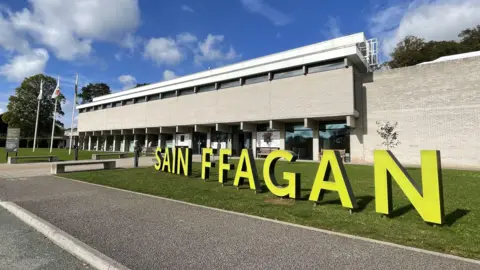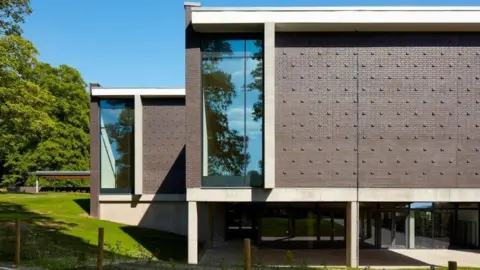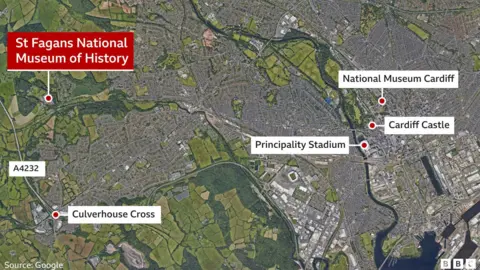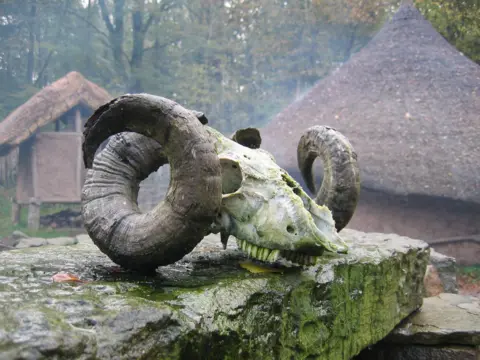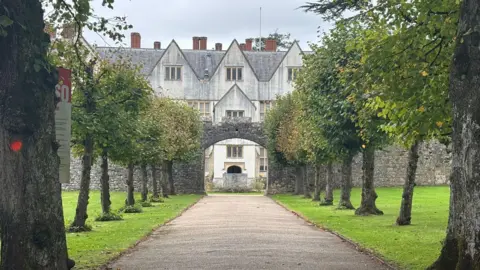Four-minute heist at the Louvre: How priceless jewels were stolen in France | Arts and Culture News
The Louvre Museum in the French capital has closed for “exceptional reasons” after a group of intruders successfully stole eight pieces of priceless jewellery in a quick-hit heist that has rocked the world’s most-visited museum.
A manhunt for the thieves was under way in Paris on Sunday as police cordoned off the museum – famously home to Leonardo da Vinci’s painting Mona Lisa – with tape and as armed soldiers patrolled its iconic glass pyramid entrance.
Recommended Stories
list of 3 itemsend of list
French government and museum officials said several intruders entered the Galerie d’Apollon (Apollo’s Gallery) through a window shortly after the museum opened, relying on a lift used to hoist furniture into buildings.
Within just four minutes, the thieves stole away on motorcycles laden with eight items dating back to the Napoleonic era, dropping a ninth on their way out.
French President Emmanuel Macron took to social media to denounce the heist as an “attack on a heritage that we cherish”.
“The perpetrators will be brought to justice,” he added. “Everything is being done, everywhere, to achieve this, under the leadership of the Paris prosecutor’s office.”
Here’s what we know about the heist, which arrives as the Louvre faces questions over large crowds and overworked staff.
What happened?
Around 9:30am local time (07:30 GMT) on Sunday, as tourists already roamed the halls of the Louvre, the thieves zeroed in on Apollo’s Gallery – a gold-gilded, lavishly painted hall commissioned by King Louis XIV that houses the French crown jewels.
Describing the incident as a “major robbery”, Interior Minister Laurent Nunez said the thieves used a basket lift to reach the museum’s windows, entered the gallery and escaped via motorbike with “jewels of inestimable value”.
The Louvre evacuated all visitors and posted a notice online that the museum would remain closed throughout the day under “exceptional” circumstances.
Police meanwhile sealed the gates, cleared courtyards and even closed off nearby streets along the Seine River as authorities kicked off an investigation.
It was “crazy”, one American tourist, Talia Ocampo, told the AFP news agency – “like a Hollywood movie”.
No injuries were reported, but the thieves – believed to number four people – remained at large as of Sunday evening.
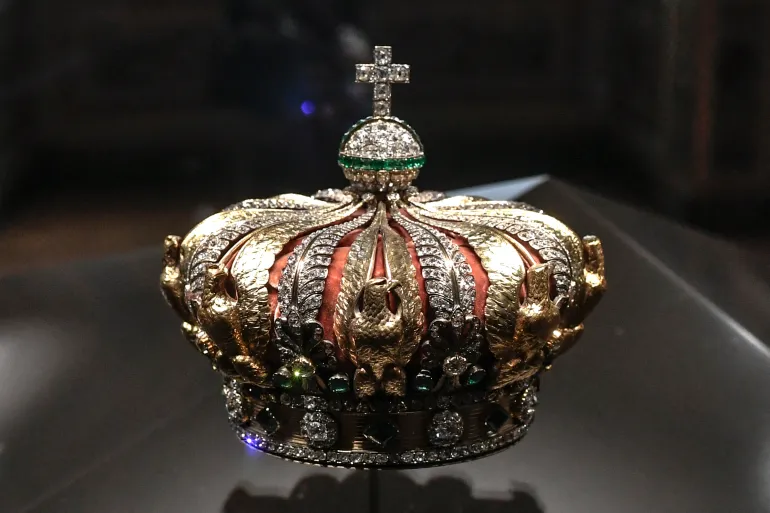
What was stolen during the heist?
Thieves successfully removed eight items from two high-security display cases, the Ministry of Culture confirmed late on Sunday. These include pieces that belonged to Empress Marie-Louise, the wife of French Emperor Napoleon I, and others that belonged to Empress Eugenie, the wife of Napoleon III.
These are the items that were stolen:
- Tiara from the jewellery set of Queen Marie-Amelie and Queen Hortense
- Necklace from the same duo’s sapphire jewellery set
- A single earring from the sapphire jewellery set
- Emerald necklace from the Marie-Louise set
- Pair of emerald earrings from the Marie-Louise set
- Brooch known as the “reliquary” brooch
- Tiara of Empress Eugenie
- Another large brooch of Empress Eugenie
The crown of Empress Eugenie was recovered outside the walls of the museum, the ministry said, where it was dropped by the thieves as they fled. The crown contains 1,354 diamonds and 56 emeralds, according to the Louvre.
Apollo’s Gallery is home to a range of other priceless gems, including three historical diamonds – the Regent, the Sancy and the Hortensia – and “the magnificent hardstone vessel collection of the kings of France”, according to the museum’s website.
Anthony Amore, an art theft expert and co-author of the book Stealing Rembrandts: The Untold Stories of Notorious Art Heists, told Al Jazeera the items contained in the collection were priceless “not just in terms of dollars, but in terms of cultural patrimony”.
“It’s not like stealing a masterpiece where instantly news media … would publicise this image,” Amore said. “You might see pieces like this broken up and individual jewels sold that are indistinguishable to members of the public.”
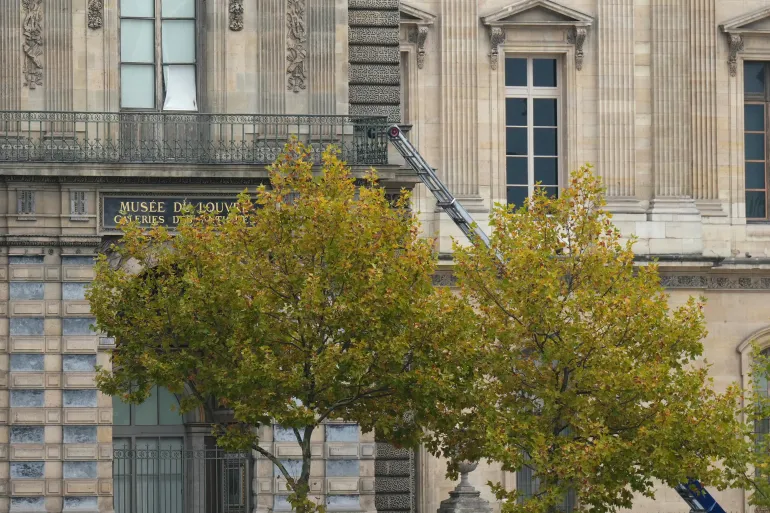
How did the thieves do it?
The thieves used a combination of power tools, motorcycles and efficiency to pull off the minutes-long heist, authorities said.
The group drew up on a scooter armed with angle grinders, one police source told AFP. They used the hoist to access the gallery from the outside, cutting windowpanes with a disc cutter.
One witness, who told the TF1 news outlet that he was riding his bicycle nearby at the time, said he saw two men “get on the hoist, break the window and enter”, adding that the entire operation “took 30 seconds”.
Le Parisien reported that the thieves entered the museum – located inside a former palace – via the facade facing the Seine, where construction work is ongoing. Two were dressed as construction workers in yellow safety vests, the newspaper said.
Culture Minister Rachida Dati said authorities arrived “a couple of minutes after we received information of this robbery”.
“To be completely honest, this operation lasted almost four minutes – it was very quick,” she said.
Footage showed the hoist braced to the Seine-facing facade and leading up to a balcony window, which observers said was the thieves’ entry point before it was removed Sunday.
What happens now?
With the thieves still at large, forensic teams have descended upon the Louvre and surrounding streets to gather evidence and review CCTV footage from the Denon wing, where Apollo’s Gallery is located, and the Seine riverfront.
Authorities also planned to interview staff who were working when the museum opened on Sunday, they said.
The Interior Ministry said it was compiling a detailed list of the stolen items, but added that “beyond their market value, these items have priceless heritage and historical value”.
Dati, the culture minister, suggested the thieves were “professionals”.
“Organised crime today targets objects of art, and museums have of course become targets,” she said.
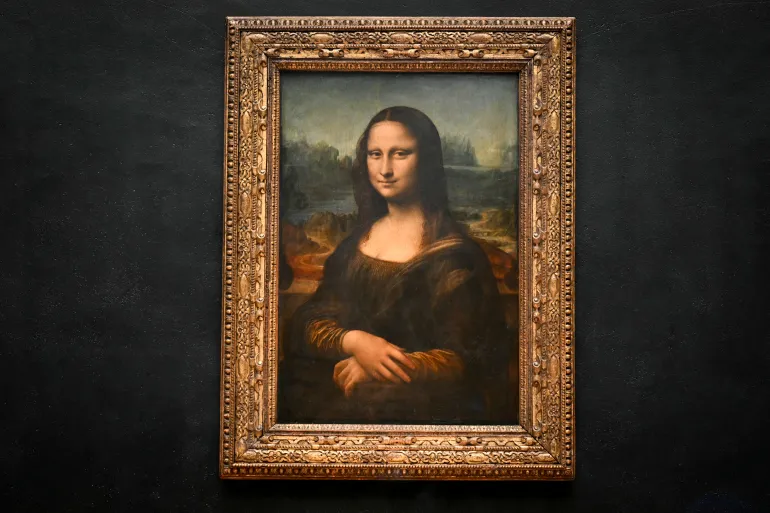
Have similar heists happened in the past?
The Louvre’s most famous heist occurred in 1911, when the Mona Lisa portrait disappeared from its frame. It was recovered two years later, but decades afterward, in 1956, a visitor threw a stone at the world-famous painting – chipping paint near the subject’s left elbow and prompting the portrait to be moved behind bulletproof glass.
In recent years, the museum has struggled with growing crowds, which totalled 8.7 million in 2024, and frustrated staff who say they are stretched too thin.
In June, the museum delayed opening due to a staff walkout over chronic understaffing.
One union source, who asked to remain anonymous, told AFP that the equivalent of 200 positions had been cut at the museum over the past 15 years, out of a total workforce of nearly 2,000.
The fact that Sunday’s theft took place in broad daylight inspired a wave of consternation from French citizens and politicians.
“It’s just unbelievable that a museum this famous can have such obvious security gaps,” Magali Cunel, a French teacher from near Lyon, told the Associated Press news agency.



